#alessandro blasetti
Explore tagged Tumblr posts
Text

Amadeo Nazzari-Valentina Cortese "La cena delle beffe" 1942, de Alessandro Blasetti.
7 notes
·
View notes
Text
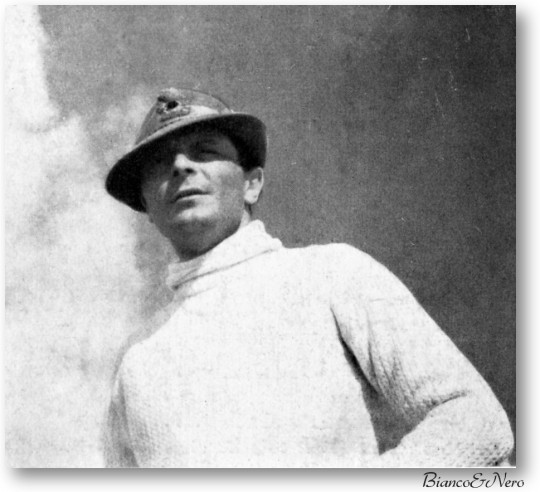
Alessandro Blasetti col cappello degli Alpini, supervisore del film Quelli della Montagna (1943), diretto da Aldo Vergano
2 notes
·
View notes
Text

Sophia Loren and Marcello Mastroianni in Peccato che sia una canaglia (Alessandro Blasetti, 1954)
29 notes
·
View notes
Photo

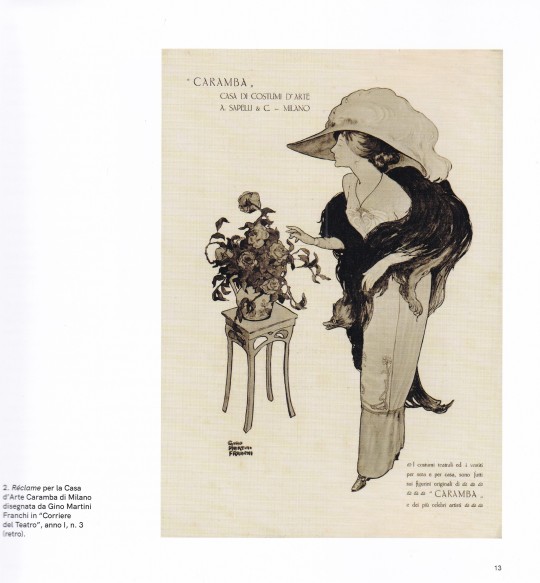
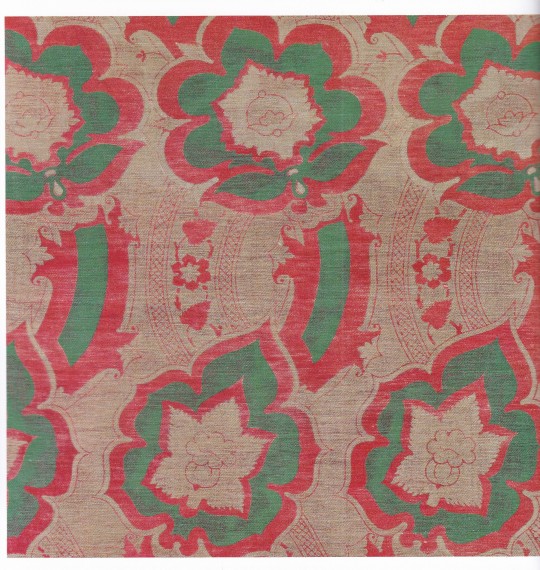


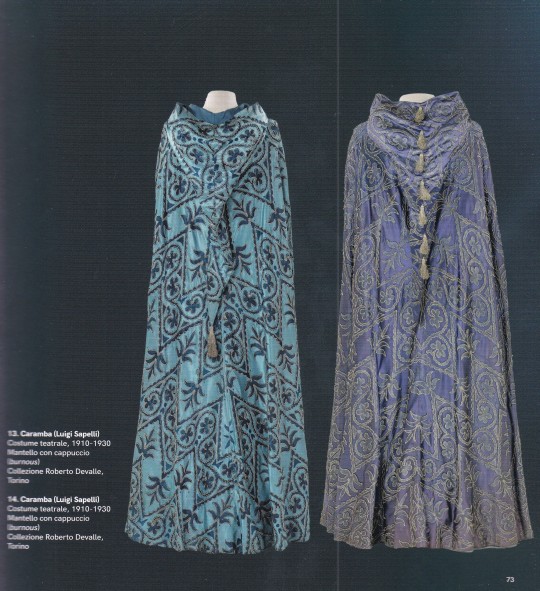
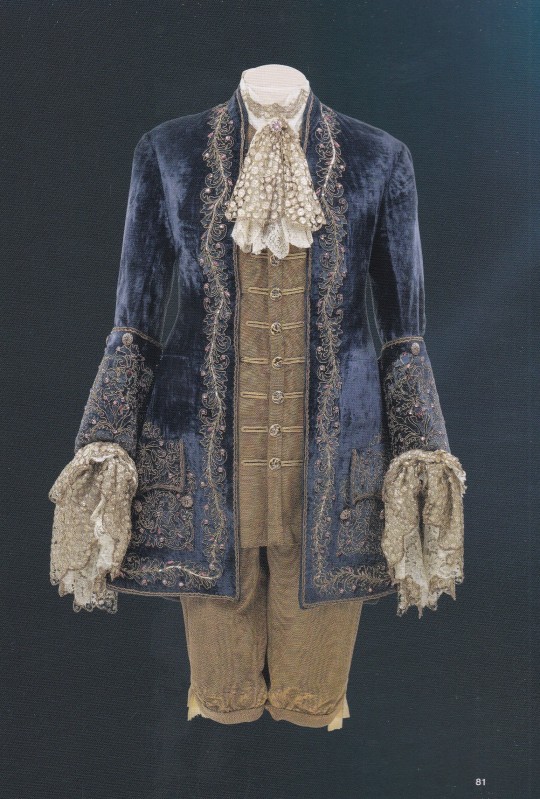



In Scena ! Luci e colori nei costumi di Caramba
catalogo a cura di Silvia Mira
Testi di Massimo Cantini Parrini, Silvia Mira, Paolo Peri, Francesca Pipi, Vittorio Ugo Vicari
Sagep Editori, Genova 2022, 156 pagine, 22 x 22 cm, ISBN 978-88-6373-863-6
euro 28,00
email if you want to buy :[email protected]
La Fondazione Accorsi-Ometto rende omaggio alla bellezza, intesa come eleganza delle forme, preziosità dei tessuti e cura dei particolari, con una splendida mostra dedicata al ‘Mago’ dei costumi teatrali Luigi Sapelli, in arte Caramba al Museo di Arti Decorative Accorsi-Ometto Torino 7 aprile- 4 settembre 2022
L’esposizione mette in risalto l’altissimo livello della produzione del costumista piemontese, attraverso una quarantina di costumi, scelti tra gli oltre tremila appartenenti alla collezione Devalle di Torino. Tra i pezzi più iconici del lavoro della Casa d’Arte Caramba, fondata nel 1909 a Milano, sono esposti: preziosi esemplari per il dramma d’annunziano Parisina e per la prima della Turandot del 1926 con la direzione di Toscanini alla Scala di Milano; i costumi rinascimentali realizzati con i preziosi velluti di Mariano Fortuny e i costumi per Elisa Cegani e Luisa Ferida, firmati da Gino Carlo Sensani, nel film del 1941 La corona di ferro di Alessandro Blasetti. In mostra si trovano anche diversi tessuti della Manifattura Mariano Fortuny, a sottolineare la collaborazione tra i due artisti iniziata all’indomani della creazione della Casa d’Arte Caramba, una vera e propria fucina del “Mago” – così come spesso era definito – in cui si riunivano diverse professionalità, dai sarti, alle ricamatrici, ai calzolai, ai fabbri, in grado di dar vita a costumi di eccezionale valore artistico.
25/03/23
orders to: [email protected]
ordini a: [email protected]
twitter: @fashionbooksmi
instagram: fashionbooksmilano, designbooksmilano tumblr: fashionbooksmilano, designbooksmilano
#Caramba#Luigi Sapelli#Mariano Fortuny#exhibition catalogue#Museo Accorsi-Ometto Torino 2022#costumi teatrali#theatrical costumes#collezione Devalle#Turandot Scala1926#fashion books#fashionbooksmilano
13 notes
·
View notes
Text
Luchino Visconti
Luchino Visconti ou Luchino Visconti di Modrone, conde de Lonate Pozzolo (Milão, 2 de novembro de 1906 — Roma, 17 de março de 1976) foi um dos mais importantes directores de cinema italianos. Era descendente da nobre família milanesa dos Visconti.
Biografia
Filho de Giuseppe Visconti, o duque de Grazzano e de Carla Erba, herdeira de uma grande empresa farmacêutica, Luchino tinha mais seis irmãos. Prestou o serviço militar como suboficial de cavalaria, em 1926, no Piemonte, e viveu os anos de sua juventude cuidando dos cavalos de sua propriedade. Além disso, frequentou ativamente o mundo da lírica e do melodrama, que tanto o influenciou.
Foi para a França, onde se tornou amigo de Coco Chanel e, através dela, em 1936, foi apresentado ao cineasta Jean Renoir, com quem trabalhou no filme Une partie de campagne. Em 1937, passou por Hollywood, antes de retornar a Roma. Na capital italiana, trabalhou com Renoir na direção da ópera Tosca.
A partir de 1940, ligou-se aos intelectuais que faziam o jornal Cinema e vendeu jóias da família para realizar seu primeiro filme, Ossessione, em 1943, com Clara Calamai e Massimo Girotti. No fim da Segunda Guerra Mundial realizou o segundo filme, o documentário Giorni di gloria. Contratado pelo Partido Comunista Italiano para realizar três filmes sobre pescadores, mineiros e camponeses da Sicília, acabou por fazer apenas um, A Terra Treme.Clara Calamai e Massimo Girotti em Ossessione (1943)
Em 1951 ele filmou Bellissima , com a grande atriz italiana Anna Magnani , Walter Chiari e Alessandro Blasetti . O primeiro filme colorido foi em 1954, Senso com Alida Valli e Farley Granger . O primeiro grande prêmio da crítica chega em 1957, quando ele recebe o Leão de Ouro do Festival Internacional de Cinema de Veneza pelo filme" Noites Brancas ", uma transposição delicada e poética de uma história de Fiódor Dostoiévski , com Marcello Mastroianni , Maria Schell e Jean Marais .
O primeiro sucesso de bilheteria viria em 1960 com Rocco e Seus Irmãos , a saga de uma humilde família de calabreses que emigrava para Milão. Foi o filme que consagrou o ator francês Alain Delon ao lado de Annie Girardot e Renato Salvatori . No ano seguinte ele se juntou a Vittorio De Sica , Federico Fellini e Mario Monicelli no filme de episódios Boccaccio 70 . O episódio de Visconti é estrelado por Tomas Milian , Romy Schneider , Romolo Valli e Paolo Stoppa .
Em 1963 dirigiu seu maior sucesso comercial e um dos filmes mais elogiados pela crítica, o grandioso O Leopardo , com três horas de duração e extraído do romance homônimo de Giuseppe Tomasi di Lampedusa , vencedor da Palma de Ouro do Festival de Cannes , que conta a história da transição da nobreza para o populismo na Sicília, nos tempos da Unificação Italiana . O filme tem um elenco estelar onde destacam Burt Lancaster , Claudia Cardinale e Alain Delon.
Vaghe stelle dell'Orsa…, um mergulho inquieto e melancólico na capacidade dos seres sensíveis para se destruírem amorosamente, com Claudia Cardinale e Jean Sorel, realizado em 1965, foi a obra seguinte. Em 1970, ele conheceu o fracasso de uma obra sua, com O Estrangeiro, extraído do livro homônimo de Albert Camus e realiza também La caduta degli dei que lançou o actor Helmut Berger.
Com o sensível e refinado Morte em Veneza (1971), protagonizado por Dirk Bogarde e baseado na obra de Thomas Mann, ele voltou a se encontrar com o sucesso de público e de crítica. O filme conta a história de Gustav Aschenbach, um compositor que vai passar férias em Veneza, e acaba por viver uma grande e inesperada paixão, que iniciaria a sua completa destruição. O filme faz uma abordagem do conceito filosófico de beleza, assim como a passagem do tempo a importância da juventude nas nossas vidas. O filme seguinte foi o grandioso, mas decepcionante, Ludwig, com Helmut Berger e Romy Schneider. Durante as filmagens de Ludwig, ele sofreu um ataque cardíaco que o prendeu a uma cadeira de rodas até a sua morte, em 1976.
Mesmo com muita dificuldade, Luchino Visconti ainda fez dois filmes, Violência e Paixão (Gruppo di famiglia in un interno) e L'innocente, sua derradeira obra, versão do romance de Gabriele d'Annunzio que registra brilhantes interpretações de Giancarlo Giannini e Laura Antonelli.
Vida pessoal e morte
Apesar dos casos amorosos vividos, em diferentes períodos, com várias mulheres, como a estilista Coco Chanel, com as atrizes Clara Calamai (1909 – 1998), María Denis (1916 – 2004), Marlene Dietrich e com a escritora Elsa Morante, Visconti jamais escondeu sua homossexualidade, explicitamente referida em muitos dos seus filmes e nas montagens teatrais que dirigiu. Segundo Visconti, em sua autobiografia, ele e o rei Humberto II da Itália tiveram um relacionamento amoroso durante a juventude na década de 1920. Nos anos 1930, em Paris, teve um relacionamento com o fotógrafo Horst P. Horst. Entre o final dos anos 1940 e o início dos 1950, já consagrado como diretor, manteve uma longa relação afetiva e profissional com o seu então cenógrafo Franco Zeffirelli, que vivia então na villa do diretor, na via Salária, em Roma.
Depois de 1965, Visconti foi ligado ao ator austríaco Helmut Berger , que também atuou em alguns de seus filmes. A relação se manteve, com altos e baixos, até a morte de Visconti, em 1976.

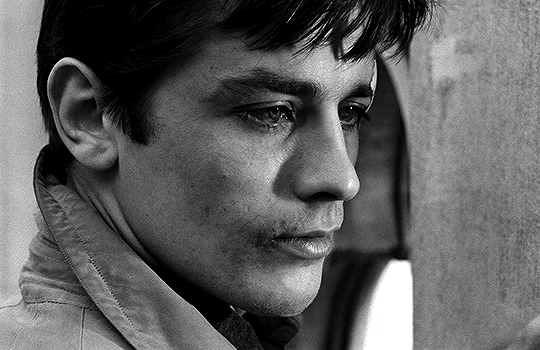


ALAIN DELON Rocco and His Brothers (1960) dir. Luchino Visconti
1K notes
·
View notes
Text
Gustavo Lombardo: Un pioniere del cinema italiano
Gustavo Lombardo (Napoli, 3 settembre 1885 – Roma, 15 marzo 1951) è stato un pioniere del cinema italiano, figura chiave nello sviluppo dell'industria cinematografica nazionale durante la prima metà del XX secolo. Le origini e l'inizio della carriera Nato a Napoli da una famiglia borghese, Lombardo si laureò in giurisprudenza, ma la sua passione per il cinema lo spinse ad abbandonare la carriera legale. Nel 1904, a soli 19 anni, fondò a Napoli una società di noleggio e distribuzione di pellicole, la "Lombardo Film", diventando rapidamente un punto di riferimento per il cinema in Italia meridionale. La fondazione della Titanus Nel 1928, Lombardo trasferì la sua attività a Roma e fondò la Titanus, la prima casa di produzione cinematografica italiana. La Titanus si distinse per la sua attenzione al cinema di qualità, producendo film di autori come Alessandro Blasetti, Vittorio De Sica, Mario Camerini e Roberto Rossellini. Il contributo al cinema italiano Lombardo non solo fu un prolifico produttore, ma anche un abile imprenditore. Introdusse in Italia innovative strategie di distribuzione e marketing, contribuendo a modernizzare l'industria cinematografica nazionale. Alcuni dei film più importanti prodotti dalla Titanus: - 1860 (1934) di Alessandro Blasetti - Scipione l'Africano (1937) di Carmine Gallone - I bambini ci guardano (1944) di Vittorio De Sica - Roma città aperta (1945) di Roberto Rossellini - Paisà (1946) di Roberto Rossellini - Ladri di biciclette (1948) di Vittorio De Sica - Riso amaro (1949) di Giuseppe De Santis L'eredità di Gustavo Lombardo Gustavo Lombardo morì a Roma nel 1951, lasciando un'eredità indelebile nel cinema italiano. La Titanus, sotto la guida del figlio Goffredo, continuò a produrre film di successo fino agli anni '80. Lombardo è ricordato come uno dei pionieri del cinema italiano, un uomo che ha avuto il merito di aver contribuito a trasformare il cinema italiano in un'industria moderna e competitiva a livello internazionale. Foto di Gerd Altmann da Pixabay Read the full article
0 notes
Text
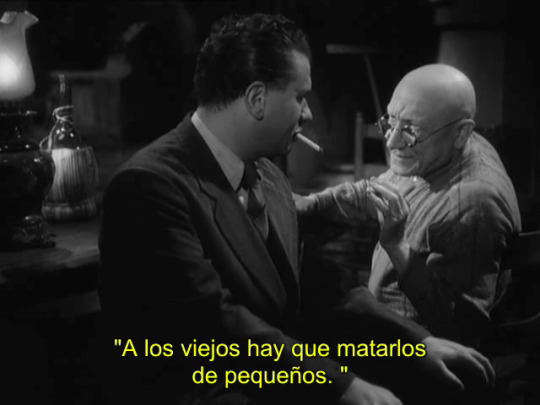
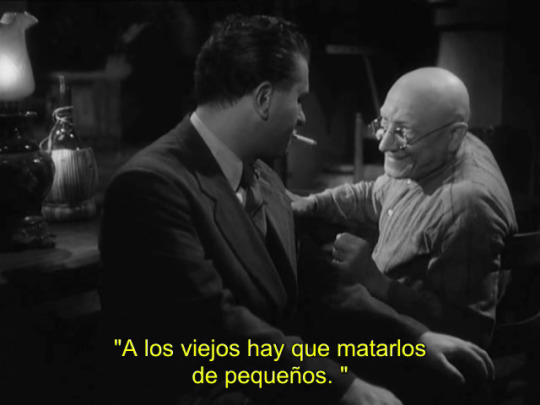
Quattro passi fra le nuvole [Alessandro Blasetti, 1942]
0 notes
Photo
Luchino Visconti, Farley Granger, Rome 1954
Luchino Visconti
Luchino Visconti ou Luchino Visconti di Modrone, conde de Lonate Pozzolo (Milão, 2 de novembro de 1906 — Roma, 17 de março de 1976) foi um dos mais importantes directores de cinema italianos. Era descendente da nobre família milanesa dos Visconti.
Biografia
Filho de Giuseppe Visconti, o duque de Grazzano e de Carla Erba, herdeira de uma grande empresa farmacêutica, Luchino tinha mais seis irmãos. Prestou o serviço militar como suboficial de cavalaria, em 1926, no Piemonte, e viveu os anos de sua juventude cuidando dos cavalos de sua propriedade. Além disso, frequentou ativamente o mundo da lírica e do melodrama, que tanto o influenciou.
Foi para a França, onde se tornou amigo de Coco Chanel e, através dela, em 1936, foi apresentado ao cineasta Jean Renoir, com quem trabalhou no filme Une partie de campagne. Em 1937, passou por Hollywood, antes de retornar a Roma. Na capital italiana, trabalhou com Renoir na direção da ópera Tosca.
A partir de 1940, ligou-se aos intelectuais que faziam o jornal Cinema e vendeu jóias da família para realizar seu primeiro filme, Ossessione, em 1943, com Clara Calamai e Massimo Girotti. No fim da Segunda Guerra Mundial realizou o segundo filme, o documentário Giorni di gloria. Contratado pelo Partido Comunista Italiano para realizar três filmes sobre pescadores, mineiros e camponeses da Sicília, acabou por fazer apenas um, A Terra Treme.Clara Calamai e Massimo Girotti em Ossessione (1943)
Em 1951 ele filmou Bellissima , com a grande atriz italiana Anna Magnani , Walter Chiari e Alessandro Blasetti . O primeiro filme colorido foi em 1954, Senso com Alida Valli e Farley Granger . O primeiro grande prêmio da crítica chega em 1957, quando ele recebe o Leão de Ouro do Festival Internacional de Cinema de Veneza pelo filme" Noites Brancas ", uma transposição delicada e poética de uma história de Fiódor Dostoiévski , com Marcello Mastroianni , Maria Schell e Jean Marais .
O primeiro sucesso de bilheteria viria em 1960 com Rocco e Seus Irmãos , a saga de uma humilde família de calabreses que emigrava para Milão. Foi o filme que consagrou o ator francês Alain Delon ao lado de Annie Girardot e Renato Salvatori . No ano seguinte ele se juntou a Vittorio De Sica , Federico Fellini e Mario Monicelli no filme de episódios Boccaccio 70 . O episódio de Visconti é estrelado por Tomas Milian , Romy Schneider , Romolo Valli e Paolo Stoppa .
Em 1963 dirigiu seu maior sucesso comercial e um dos filmes mais elogiados pela crítica, o grandioso O Leopardo , com três horas de duração e extraído do romance homônimo de Giuseppe Tomasi di Lampedusa , vencedor da Palma de Ouro do Festival de Cannes , que conta a história da transição da nobreza para o populismo na Sicília, nos tempos da Unificação Italiana . O filme tem um elenco estelar onde destacam Burt Lancaster , Claudia Cardinale e Alain Delon.
Vaghe stelle dell'Orsa..., um mergulho inquieto e melancólico na capacidade dos seres sensíveis para se destruírem amorosamente, com Claudia Cardinale e Jean Sorel, realizado em 1965, foi a obra seguinte. Em 1970, ele conheceu o fracasso de uma obra sua, com O Estrangeiro, extraído do livro homônimo de Albert Camus e realiza também La caduta degli dei que lançou o actor Helmut Berger.
Com o sensível e refinado Morte em Veneza (1971), protagonizado por Dirk Bogarde e baseado na obra de Thomas Mann, ele voltou a se encontrar com o sucesso de público e de crítica. O filme conta a história de Gustav Aschenbach, um compositor que vai passar férias em Veneza, e acaba por viver uma grande e inesperada paixão, que iniciaria a sua completa destruição. O filme faz uma abordagem do conceito filosófico de beleza, assim como a passagem do tempo a importância da juventude nas nossas vidas. O filme seguinte foi o grandioso, mas decepcionante, Ludwig, com Helmut Berger e Romy Schneider. Durante as filmagens de Ludwig, ele sofreu um ataque cardíaco que o prendeu a uma cadeira de rodas até a sua morte, em 1976.
Mesmo com muita dificuldade, Luchino Visconti ainda fez dois filmes, Violência e Paixão (Gruppo di famiglia in un interno) e L'innocente, sua derradeira obra, versão do romance de Gabriele d'Annunzio que registra brilhantes interpretações de Giancarlo Giannini e Laura Antonelli.
Vida pessoal e morte
Apesar dos casos amorosos vividos, em diferentes períodos, com várias mulheres, como a estilista Coco Chanel, com as atrizes Clara Calamai (1909 – 1998), María Denis (1916 – 2004), Marlene Dietrich e com a escritora Elsa Morante, Visconti jamais escondeu sua homossexualidade, explicitamente referida em muitos dos seus filmes e nas montagens teatrais que dirigiu. Segundo Visconti, em sua autobiografia, ele e o rei Humberto II da Itália tiveram um relacionamento amoroso durante a juventude na década de 1920. Nos anos 1930, em Paris, teve um relacionamento com o fotógrafo Horst P. Horst. Entre o final dos anos 1940 e o início dos 1950, já consagrado como diretor, manteve uma longa relação afetiva e profissional com o seu então cenógrafo Franco Zeffirelli, que vivia então na villa do diretor, na via Salária, em Roma.
Depois de 1965, Visconti foi ligado ao ator austríaco Helmut Berger , que também atuou em alguns de seus filmes. A relação se manteve, com altos e baixos, até a morte de Visconti, em 1976.

62 notes
·
View notes
Text

Cartel película "Las cuatro verdades" (Les quatre vérités) 1962, de Luis García Berlanga, Alessandro Blasetti, Hervé Bromberger, René Clair.
5 notes
·
View notes
Text

Alessandro Blasetti spiega una scena a Mariella Lotti, interprete femminile di Quelli della Montagna (1943) diretto da Aldo Vergano
#mariella lotti#alessandro blasetti#quelli della montagna#cinema italiano#attrici italiane#registi italiani#my scans
4 notes
·
View notes
Text
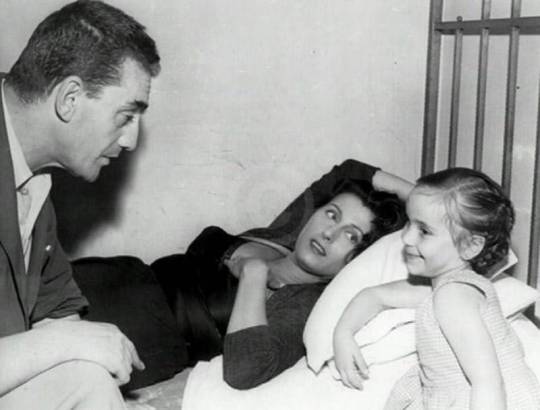
#ProyeccionDeVida
🎥 El Neorrealismo Italiano, presenta:
🎬 “BELLISIMA”
🔎 Género: Drama / Neorrealismo / Cine dentro del cine
⏰ Duración: 108 minutos
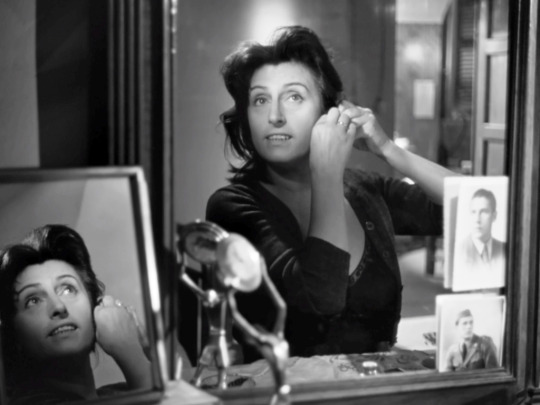
✍️ Guión: Suso Cecchi d'Amico, Francesco Rosi y Luchino Visconti.
📕 Historia: Cesare Zavattini
🎼 Música: Franco Mannino
📷 Fotografía: Piero Portalupi y Paul Ronald (B&W)
🗯 Argumento: En los estudios de Cinecittà, el director Alessandro Blasetti está haciendo un casting para seleccionar a la niña que actuará en su nueva película. Entre las madres que han llevado a sus hijas está Maddalena Cecconi, una mujer de barrio que sueña con ver a su hija en el Olimpo de las grandes estrellas. Contra la voluntad de su marido, Maddalena no repara en medios para conseguir su objetivo: inscribe a María en un curso de baile y actuación, le paga fotógrafo y peluquera, le encarga vestidos a medida. En su obsesión, confía incautamente en Alberto Annovazzi, un especulador sin escrúpulos que dice tener los contactos necesarios para que María realice la prueba.

👥 Reparto: Anna Magnani, Tina Apicella, Luciana Ricci, Walter Chiari, Gastone Renzelli, Vittorio Musy Glori y Alessandro Blasetti.
📢 Dirección: Luchino Visconti
© Productora: Film Bellissima
🌏 País: Italia
📅 Año: 1951

📽 Proyección:
📆 Jueves 21 de Marzo
🕡 6:30pm.
🏡 Auditorio Leonardo Da Vinci del Instituto Italiano de Cultura (av. Arequipa 1055, Urbanización Santa Beatriz - Lima)
🚶♀️🚶♂️ Ingreso libre

👀 A tener en cuenta: Película dirigida a público mayor de quince años. (15+)
0 notes
Text
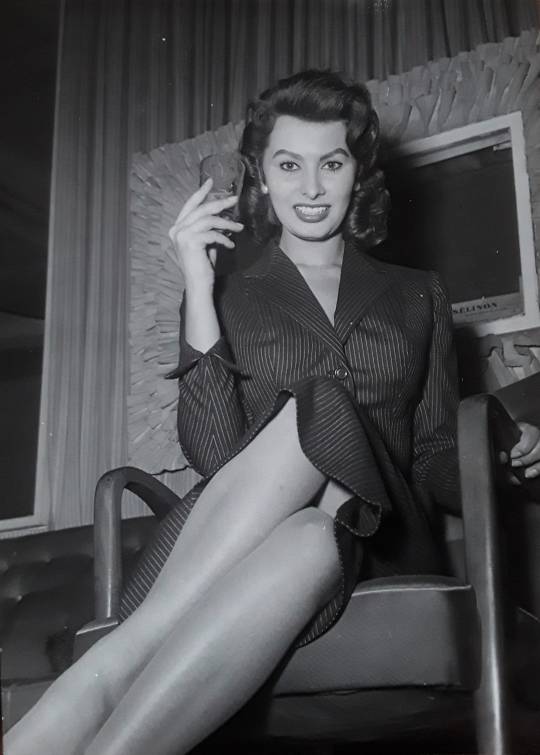
Milano, 3 febbraio 1955. Sophia Loren all'anteprima del suo nuovo film "Peccato che sia una canaglia" diretto da Alessandro Blasetti. Foto Farabola
1 note
·
View note
Text
Great Wolf
MOSTRA DEL CINEMA DI VENEZIA 2023 VENEZIA CLASSICI BELLISSIMA Drammatico, Italia 1951. Durata 113 Minuti. Consigli per la visione: Ragazzi +16 Un film di Luchino Visconti. Con Anna Magnani, Walter Chiari, Gastone Renzelli, Tina Apicella Quando il regista Alessandro Blasetti (che qui si presenta anche come interprete) annuncia che gli occorre un’attrice bambina “bellissima”, una torma di mamme romane si riversa su Cinecittà proponendo la propria figliolanza.
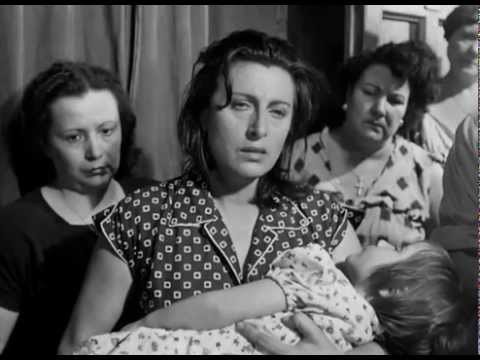
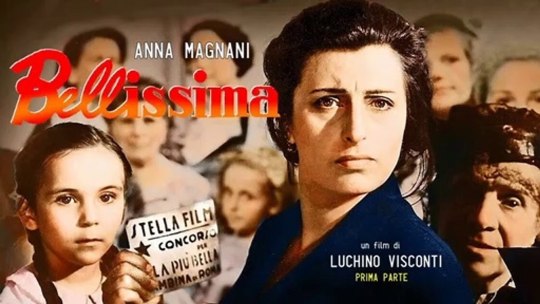
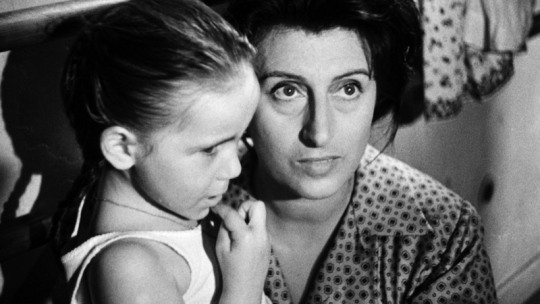
0 notes
Text
NOI VIVI - ADDIO KIRA! - (Goffredo Alessandrini, 1942)

“Noi vivi” (aka "We the Living", a movie that, by its unusual length has always been released as 2 separated films titled respectively "Noi vivi" and “Addio Kira!”) emerges undoubtedly, at any honest impartial critique, if not the director's most "perfect" movie, as the real "masterpiece" of Goffredo Alessandrini, a filmmaker who was one among the most creative and skilled directors of the Italian cinema between the two World Wars and is nowadays almost forgotten or, I should say, "disowned" by the cinematic sociability due to some of the successful movies he directed in the 1930s that praised and publicized the nationalist themes of the Fascist regime of which he was quickly considered as a kind of cinematographic mentor. Nevertheless, and before I dwell on the film that is the subject of these considerations, I think it is convenient to further deepen the original and very interesting personality of this adventurous and intellectual filmmaker who could well be defined a sort of living icon that embodied those concepts of bold individuality and heroic creativity so cherished to the regime that then ruled Italy. GOFFREDO ALESSANDRINI. Goffredo Alessandrini was born in Cairo (where he lived until he was a teenager) in one of the most important and richest families of the Italian community in Egypt.; his father was a great businessman (he directed also the building of the Assuan big dams) and he wanted to give his newborn son an Anglo Saxon education (by an English governess) interspersed with frequent travels to Europe. When he attained suitable age, Goffredo was sent to study engineering at Cambridge, England, but the guy was more interested in sports activities than studying so he left the University and went to Italy where he practiced various sports activities (he also became National Champion in obstacle race). The following year he enrolled in the Faculty of Architecture and Scenography; in this area he was able to win the first prize in cinematic scenography (he was become a cinema passionate after having watched "L'Atlantide" of Jacques Feyder). His career in cinema was overwhelming and it effectively started when Alessandro Blasetti wanted him as assistant for his "Sole", one of the most innovative movies of the Italian silent cinema. His fate was set: his first movie ("Douze mille hommes force", a "colossal" documentary on the construction of a gigantic dam on the Nile in which 12,000 men move like ants in the spectacular Egyptian scenery) made him being known in film environments and in 1931 he was assigned the direction of the Italian version of a successful German comedy; the title is "La segretaria privata" (from the original "Die Privatsekretärin” di Wilhelm Thiele) and the movie suddenly became the first great success of the Italian sound cinema. After a few years in Hollywood, where he developed his experience as a dubbing director, as a writer, then as a consultant director, in 1934 he returned to Italy; here he directed a delicate comedy; "Seconda B", an adolescent romance that gets another great hit from the audience. After his biographic movie about “Don Bosco”, that represents his most personal film, Alessandrini staged a refined period movie in 1936: "Cavalleria", starring Amedeo Nazzari and Luisa Cegani, the romantic bittersweet story of an impossible love that stands, in my opinion (and by a purely cinematographic pov) as his best movie. In the following years Alessandrini, now an established director, directed “Luciano Serra, pilota” from a screenplay he had written with Roberto Rossellini; if not fully successful (there is too much discontinuity, imo, between the first and the second part of the movie) the film won the Coppa Mussolini, a prize that then equalled the prestige of the actual Golden Lion of the Venice Film Festival. Three spectacular movies followed: the colonial-propagandist “Abuna Messias” and “Giarabub” interspersed with (the superior) “Caravaggio”. In the early 1940s, Alessandrini, as well as a famous filmmaker, was considered a real "celebrity", a fascinating adventurer with stylish habits and expensive tastes., a handsome man who showed off the set (where he could assert his professional qualities) an inherent magniloquence and a fascinating taste for excess. Alessandrini was a great metteur-en-scène of epic sequences and ruthless battles where he could make to shine his figure of a director/commander who jumps among the opposite battlefields riding his white horse and directing fake fights between African tribes (they say that, for the huge masses required in his war movie "Giarabub", he was able to obtain from the Government, the 8th Regiment Bersaglieri and a whole battalion of Camice Nere). As it appears to me, Alessandrini enters the immense living scenography of his mass movies with sincere vitalist propensity and brilliant environmental adherence.; these characteristics establish the visual charms of his choral movies but explain also both the unavoidable heeling of the narrative structure and a pervading sense of incompleteness of the movies in question. I think Alessandrini was not (if in a minimal part) a director in the service of the regime but one of those intellectuals who formed their culture and their behavior by inspiring themselves to D'Annunzio and (ironically) just due their adversion to the most trivial sides of the Mussolini-an rhetorics, they proved to be the most suitable persons to grant the Fascism the popular consensus. However, now, at the beginning of the Forties, the director is ready for his most representative and important movie, the cinematic adaption of Ayn Rand's bestseller "We the Living", an (almost) 4-hour length film that was released divided into 2 episodes; in it, Alessandrini finds the easy, happy, popular, measure of a modern "feuilleton" (not in the pejorative meaning of the word); it may be said that, paradoxically, facing a so emphatic and overflowing tale, he found the inspiration to make, with the book at hand, the movie of his life and, probably, one of the best love melodramas ever filmed. NOI VIVI & ADDIO KIRA! The story is set in Russia, few years after the Revolution, when the Argounov's (a White Russian family) must leave the Crimea and move to St. Petersburg; there the younger daughter Kira (Alida Valli) falls in love of an aristocratic, Leo (Massimo Girotti), who is supervised by the Soviet secret police; she is arrested by antisovietism but is then released upon order of political commissioner Andrej (Fosco Giachetti). Andrej loves Kira who is preoccupied by the poor state of health of Leo; desperately in search for money to cure him, Kira let herself seduce by Andrej..... the destiny of three human beings united and divided by an impossible love story and trapped in a tragic historic context may not have a happy end. "Noi vivi" is a great "big" melodrama (it was the first Italian film almost 4 hours long) that was contested by the critics (who do not lead it) but not by the public since its first release; after the war the film even suffered a kind of ostracism due mainly to the fact that it had been produced under the Fascism and that Alessandrini was now considered a devalued filmmaker because he had made some of the most important propaganda films (very soft, in truth) of the dissolved regime. Even the fact that it was taken from one of the greatest literary successes of the Russian spill Ayn Rand contributed to the "damnatio memoriae" of the film that incredibly, even today, when to an objective vision his artistic and historical importance cannot not emerge, has not been the subject of a restoration that can allow the viewers to enjoy it in its original form. Nevertheless, "Noi vivi" is in many respects a great film. This does not mean that it is, like most of the greatest, a "perfect" one; the few small defaillances that can be noticed (monotony, prolixity), such as the squint of Venus, serve, if anything, to emphasize the dramatic power of the film and, at the same time, to point out that this is not an "art film" but a "simple" (in the best possible meaning of the term) product of quality destined to the public more popular and less pretentious. The film is also a forerunner: it can be seen as the prototype of the Italian-style telenovel (consider it has always been shown in two parts or divided into shorter episodes) and subsequent television-like stylistic motives can be found both in the original shooting modes (based mainly on close-ups, for lack of means) and in the text of the "penny dreadful" screenplay by Anton Giulio Maiano, one of the future fathers of television scripts.. Although considered at the time (and even today) an anti-communist film, the film does not condemn the October Revolution so much as the Stalinist degeneration, and precisely in this sense (the degeneration of the self-proclaimed revolutionary movements) the disturbing representation of the decline of the new Soviet regime, that so much hope had aroused in the world, appears to confirm for me a reading of the text of the film according to an Italian (contemporary) perspective (and in this sense moves the excellent adaptation of the novel by Ayn Rand made by two Italian intellectuals of the strength of Corrado Alvaro and Orio Vergani, that literally, "improves" -in the literary sense too!- the original book). If we take into account this proclaimed allusion to the contemporary Italian social situation (with a regime to the extreme) it is illuminating both the setting (all played on the interior: "rooms messy, shabby, provisional, as if the whole city was in the imminence of an immediate move that never happens" (Lourcelles) and the mise-en-scène that, by choosing a political-dialectical point of view, unexpectedly shows signs of intolerance towards the autocelebrative rhetoric of the regime; a different, free way to relate to the reality that, only a few months later, Luchino Visconti with his "Ossessione" would free from the old patterns and bounds with all its expressive and destructive power. I would point out, as major contributes to the charm of this great film, the photography of Giuseppe Caracciolo, that, with its hazy and grainy images, emphasizes the sense of unavoidable constriction of the characters; the wonderful musical score of Renzo Rossellini that creates one of the most beautiful themes ever (the theme of Kira), and the brilliant performances of two of the greatest male actors of Italian cinema like Massimo Girotti and Fosco Giachetti. As regards the immortal "Kira" depicted and "lived" by Alida Valli, the great actress presents here, in my opinion, one of the most beautiful and meaningful interpretations of her prestigious career giving body and soul to an unfortunate but proud heroine who remains unforgettable in her timeless and hopeless beauty. R.M.

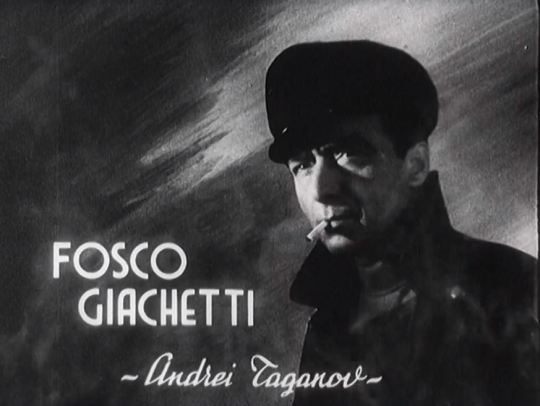





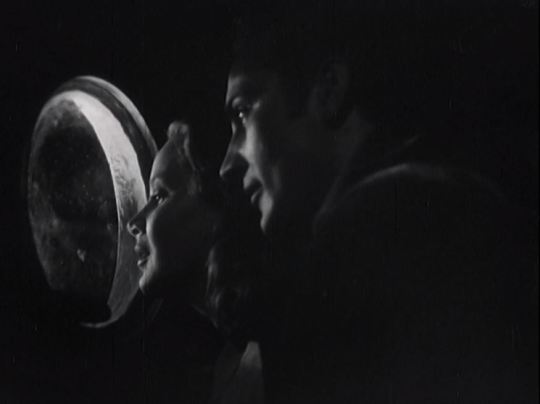

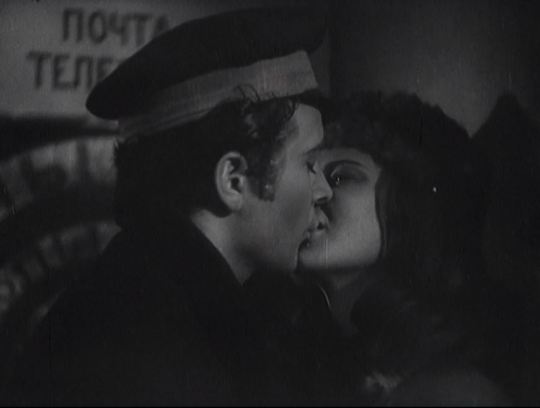
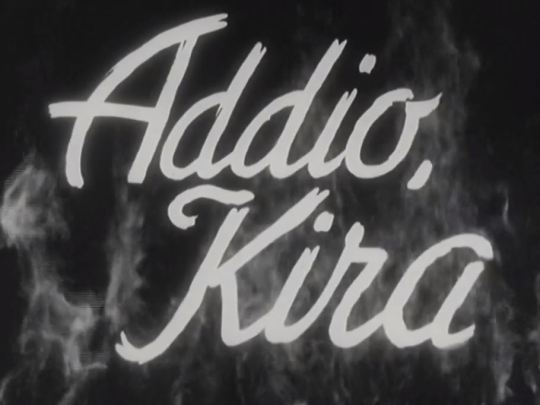
xxxxxx

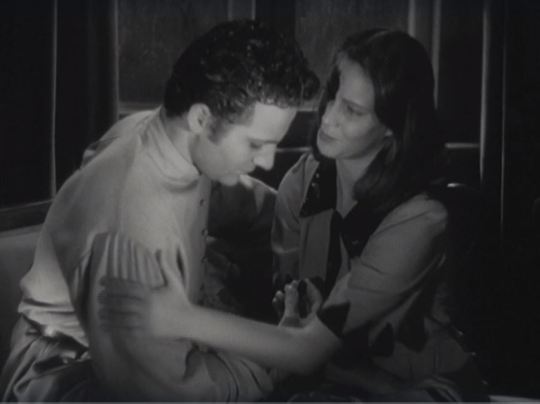







R.M.
0 notes
Text
July 3 Zodiac - Full Horoscope Personality
They are described by a decent memory and their way of behaving is a bit shaky, dependent upon future developments; all things considered, they are very dedicated individuals and are glad to set out on trips. They are dynamic, restless and rash. They ordinarily have incredible intrinsic creative capacities. In each snapshot of their life they trust and are confident, however they are bad at chipping away at their own. They are exceptionally aggressive, yet frequently miss the mark on right insight and tact. Friendly, merry: they like the imaginative propensities of youngsters, diversion and display, as well as they are keen on all that is lovely and they have a decent ear for music. They appreciate fishing and life submerged. Nonetheless, they might be in peril during the far off ocean journeys that they might be compelled to make. Positive hypotheses might permit them to create a gain, and destiny will frequently assist them with a fortunate turn of events. They need to accomplish acknowledgment, even acclaim. They show extraordinary hardheadedness and consistency in their battles regardless of their variable person. They protect the interests of their youngsters and family with specific fierceness. They might want to do anything they desire, they could do without to be controlled. What undermines them? That they won't generally find lasting success in their undertakings, they will experience surprising impediments, they will risk a profound defer in the acknowledgment of their arrangements. Their bodies are not areas of strength for especially, huge exertion generally endangers them of fatigue. By then, your stomach experiences the most, particularly from conditions of fear, disarray or anxious aggravation. Potential illnesses incorporate stomach related problems, ailment, and unfortunate blood dissemination. July 3 Zodiac - Full Horoscope Personality
In the event that your birthday is on July 3, your zodiac sign is Disease July 3 - character and character character: liberal, keen, brilliant, weak, intolerant, haughty calling: glazier, ophthalmologist, colors: orange, yellow, sky blue stone: diopside creature: lion plant: foxglove fortunate numbers: 4,14,28,31,47,48 very fortunate number: 22 Occasions and Observances - July 3 Argentina: Host's Day (Broadcaster's Day). Argentina: Bioengineer's Day. July 3 Superstar Birthday. Who was conceived that very day as you? 1900: Alessandro Blasetti, Italian producer (d. 1987). 1900: Miguel Rostaing La Torre, Peruvian soccer player (d. 1983). 1901: Julio Martდnez Oyanguren, Uruguayan guitarist (d. 1973). 1901 - Ruth Crawford Seeger, American writer (d. 1953). 1905: Clorinda Mდ¡laga de Prado, First Woman of Peru (d. 1993). 1906: Jack Earle, American entertainer (d. 1952). 1906: Alberto Lleras Camargo, Colombian columnist and legislator (d. 1990). 1906: George Sanders, English entertainer (d. 1972). 1906: Florence Gwendolen Rees, Welsh zoologist and parasitologist (f. 1994) 1908: Hდ©ctor Croxatto, Chilean researcher (f. 2010). 1913: Dorothy Kilgallen, American columnist, entertainer and essayist (d. 1965). 1914: Antonio Colino Lდ³pez, Spanish architect and scholastic (d. 2008). 1914: Joaquდn A. Gonzდ¡lez, Mexican tenor and stone carver (f. 1999). 1914: Joan Vinyoli, Spanish artist (d. 1984). 1915: Carlos Garcდa Cuervas, Argentine military man (d. 1971). 1916: John Kundla, American b-ball player. 1917: Joao Saldanha, Brazilian soccer mentor (d. 1990). 1918: Benjamin C. Thompson, American modeler (d. 2002). 1919: Irajდ¡ Damiani Pinto, Brazilian scientist. 1919: დ"scar Quinones, Peruvian painter and stone carver (d. 1987). 1919: Gabriel Valdდ©s, Chilean legal counselor and government official (d. 2011). 1920: Gaby, Spanish comedian (f. 1995). 1920: Julio Oyhanarte, Argentine legal counselor and government official (d. 1997). 1921: Jorge Boudon, Chilean entertainer and humorist (d. 2007). 1921: Susan Peters, American entertainer (d. 1952). 1922: Guillaume Cornelis van Beverloo, Belgian painter (d. 2010). 1922: Gastდ³n Pons Muzzo, Peruvian scientific expert (d. 2004). 1922: Howie Schultz, American b-ball player (d. 2009). 1924: Amalia Aguilar, Cuban entertainer. 1924: SR Nathan, Singaporean lawmaker. 1924: დ?ngel Tavira, Mexican author and musician (d. 2008). 1925: Nდ©ffer Krდ¶ger, Uruguayan musicologist and show entertainer (f. 1996). 1925: Josდ© Vento Ruiz, Spanish painter (f. 2005). 1926: Vladimir Bogomolov, Soviet author (d. 2003). 1927: Juan Antonio Flores Santana, Dominican Ecclesiastical overseer (d. 2014). 1927: Balivada Kantha Rao, Telugu author (d. 2000). 1927: Tim O'Connor, American entertainer. 1927: Ken Russell, English movie producer (d. 2011). 1928: Rafael St Nick Cruz, Peruvian matador (d. 1991). 1930: Kinji Fukasaku, Japanese movie producer (d. 2003). 1930: Carlos Kleiber, German guide and performer (d. 2004). 1930: Eloy Ybდ¡nez Bueno, Spanish ambassador. 1931: Luciano Comaschi, Italian footballer. 1932: Richard Mellon Scaife, American money manager. 1934: Ricardo Barrios Arrechea, Argentine specialist and lawmaker. 1935: Harrison Schmitt, American space traveler and government official. 1935: Cheo Feliciano, Puerto Rican vocalist and musician. 1935: Josდ© Antonio Spirits Erlich, Salvadoran lawmaker. 1936: Luis Aranda, Argentine entertainer (d. 2012). 1936: Jerდ³nimo Saavedra, Spanish lawmaker. 1937: Tom Stoppard, English dramatist of Czech beginning. 1938: Horacio Aguirre, Argentine author (d. 1992). 1938: Sjaak Swart, Dutch footballer. 1939: Brigitte Fassbaender, German guide and soprano. 1939: Lდ¡szlდ³ Kovდ¡cs, Hungarian lawmaker. 1939: Angelo Benedicto Sormani, Brazilian soccer player. 1940: Lamar Alexander, American lawmaker. 1940: Fontella Bass, American vocalist musician (d. 2012). 1940: Jerzy Buzek, Clean lawmaker. 1940: Companion Raben, German writer (d. 2007). 1940: Cდ©sar Tovar, Venezuelan baseball player. 1941: Joao Alves Filho, Brazilian lawmaker. 1941: Liamine Zდ©roual, Argentine military and lawmaker. 1941: Judith H. Myers, Canadian scholar and scientist 1942: Didar Sandhu, Hindu performer (d. 1991). 1942: Paco Stanley, Mexican TV have (d. 1999). 1943: Susana Alexander, Mexican entertainer. 1943: Kurtwood Smith, American entertainer. 1944: Silvio Caiozzi, Chilean movie producer. 1944: Michel Polnareff, French performer. 1945: Miguel Cestau, Spanish pelotari. 1945: Gualberto Garcდa, Spanish performer. 1945: Michael Martin, Noble Martin of Springburn, English legislator. 1945: Saharon Shelah, Israeli mathematician. 1946: Alberto Breccia Guzzo, Uruguayan lawmaker. 1946: John Klemmer, American saxophonist and author. 1946: Leszek Mill operator, Clean lawmaker. 1946: Carlos Alberto Riccelli, Brazilian entertainer and movie producer. 1946: Bolo Yeung, Hong Kong entertainer. 1947: Dave Barry, American author. 1947: Betty Buckley, American entertainer. 1947: Loot Rensenbrink, Dutch footballer. 1947: Ernesto Bondy Reyes, Honduran author. 1948: Luis Martდnez Noval, Spanish lawmaker. 1948: Ken Mangroelal, Surinamese author. 1949: Ignacio Almada Straight, Mexican history specialist. 1949: Rodolfo Codina, Chilean chief of naval operations. 1949: Jacinto Gდ³mez, Peruvian lawmaker. 1949: Masato Harada, Japanese entertainer and movie producer. 1949: Luz Salgado, Peruvian lawmaker. 1949: Jan Smithers, American entertainer. 1949: Bo Xilai, Chinese lawmaker. 1950: James Hahn, American lawmaker. 1951: Jean-Claude Duvalier, Haitian despot and slaughter. 1952: Marდa Cardinal, Mexican entertainer. 1952: Andy Fraser, English vocalist, lyricist and bassist, of the band John Mayall and the Bluesbreakers (d. 2015). 1952: Rohinton Mistry, Indian author. 1952: Hugo Moraga, Chilean performer. 1953: Enthusiasm Munnდ©, Spanish entertainer. 1954: John Jaakke, Dutch games administrator. 1954: Susana Rotker, Venezuelan author and writer (d. 2000). 1955: Bruce Altman, American entertainer. 1955: Walter Veltroni, Italian lawmaker. 1956: Loreto Valenzuela, Chilean entertainer. 1957: Laura Branigan, American vocalist (f. 2004). 1957: Miguel del Sel, Argentine comedian and lawmaker. 1958: დ?ngel Acebes, Spanish lawmaker. 1958: Agustდn Cuesta, Spanish b-ball player. 1958: Juan Antonio Larranaga, Spanish footballer. 1958: Rick Sდ¡nchez, Cuban-American TV moderator. 1958: Aaron Tippin, American vocalist, lyricist, guitarist and maker. 1959: Josდ© Baselga, Spanish doctor. 1959: Semilla Bucciarelli, Argentine bassist, of the band Patricio Rey y sus Redonditos de Ricota. 1959: Ian Maxtone-Graham, American screenwriter and maker. 1959: Andrდ©s Albo Mდ¡rquez, Mexican lawmaker. 1959: Stephen Pearcy, American vocalist, of the band Ratt. 1959: David Shore, Canadian author and maker. 1960: Vince Clarke, vocalist, lyricist and English keyboardist, of the band Depeche Mode. 1960: Jorge Coke Contreras, Chilean soccer player. 1960: Josu Erkoreka, Spanish lawmaker. 1960: Perrine Pelen, French skier. 1960: Ricardo Perdomo, Uruguayan soccer player and mentor. 1961: Josდ© Antonio Sobrino, Spanish physicist. 1962: Tom Voyage, American entertainer. 1962: Thomas Gibson, American entertainer. 1963: Tracey Emin, English painter and picture taker. 1964: Mario Pergolini, Argentine radio and TV host and maker. 1964: Tom Curren, American surfer. 1964: Toshiharu Sakurai, Japanese voice entertainer. 1964: Yeardley Smith, American voice entertainer, vocalist and maker. 1965: Tommy Flanagan, Scottish entertainer. 1965: Shinya Hashimoto, Japanese grappler (d. 2005). 1965: Connie Nielsen, Danish entertainer. 1966: Moisდ©s Alou, Dominican baseball player. 1966: Pablo Domდnguez Prieto, Spanish cleric and scholar (f. 2009). 1966: Daniel Court, Spanish competitor. 1967: Vladan Alanoviე‡, Croatian b-ball player. 1967: Henry Ariel Lდ³pez Bდ¡ez, Uruguayan soccer player. 1967: David Macpherson, Australian tennis player. 1968: Ramush Haradinaj, Kosovar legislator and military man. 1968: Josდ© Manuel Villegas, Spanish legislator. 1969: Gedeon Burkhard, German entertainer. 1970: Serhiy Honchar, Ukrainian cyclist. 1970: David Court, Spanish cyclist. 1970: Teemu Selდ¤nne, Finnish ice hockey player. 1970: Shawnee Smith, American entertainer. 1971: Claudia Acuna, Chilean vocalist. 1971: Julian Assange, representative and proofreader of the WikiLeaks
0 notes
Text
È per questo motivo che ho sempre trovato più attendibile la fiction della storiografia: libri, film e serie TV hanno bisogno del consenso e del riconoscimento del pubblico dell'epoca in cui nascono, dando così una percezione più precisa dello spirito di quel periodo rispetto a qualunque analisi storica successiva.
Come esempio, Vecchia guardia di Alessandro Blasetti del 1934 descrive, meglio di qualunque libro di storia scritto dai vincitori, la violenza antifascista e il sentimento popolare: le famose squadracce fasciste in camicia nera sono nate per reazione alle aggressioni di chi voleva instaurare i soviet in Italia. Se il pubblico dell'epoca non si fosse riconosciuto nel film e non lo avesse trovato attendibile, non sarebbe stato un successo commerciale, non sarebbe entrato nella storia del cinema e Blasetti non sarebbe diventato uno dei registi italiani più importanti di sempre.
Lost in translation
Ai fatti storici che riposano ben ordinati nei libri manca tutto il climax degli umori della società che ha permesso a quei fatti di accadere, il sentimento in presa diretta dell'improrogabilità delle decisioni prese senza il senno del poi. La ricostruzione storica più precisa non può trasmettere quel certo sentimento vivo del presente privo allora della cognizione del futuro e la storia ne esce quindi come una successione di fatti legati fra di loro da un filo sì coerente, ma prodotto perlopiù a posteriori dal senno del poi degli storici. È un discorso affine all'ermeneutica di Gadamer: per tanto che si tenti di essere obiettivi, il giudizio sul passato è influenzato da tutta la struttura dei giudizi attuali, così ben interiorizzati da non essere avvertiti, per cui siamo fatalmente immersi in una nebbia che deforma sempre il nostro sguardo sul passato. Da tener presente quando si dovrà scrivere la storia del momento attuale, in cui sarà facile smarrire quel che in generale non si vuole mai sentirsi dire.
57 notes
·
View notes